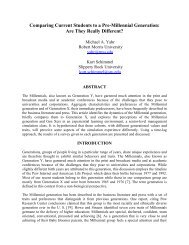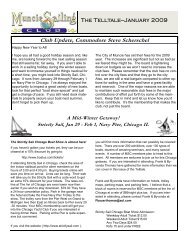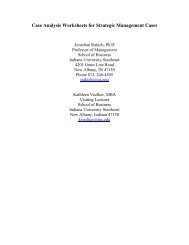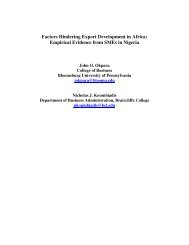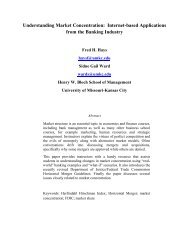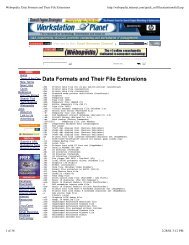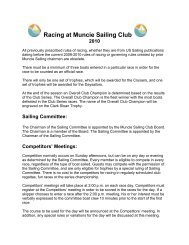Active versus Passive Management of International Mutual Funds ...
Active versus Passive Management of International Mutual Funds ...
Active versus Passive Management of International Mutual Funds ...
You also want an ePaper? Increase the reach of your titles
YUMPU automatically turns print PDFs into web optimized ePapers that Google loves.
6<br />
Risk adjusted return. The fund’s yearly return adjusted for the risk undertaken by the<br />
fund manager is the risk adjusted return [73].<br />
Summary<br />
The introduction provided the background and history <strong>of</strong> the problem associated with<br />
active <strong>versus</strong> passive management. The justification for the study and the research question were<br />
identified. The next section, the literature review, will provide the support for the research<br />
question <strong>of</strong> the study and will lead to the development <strong>of</strong> the hypotheses that will be addressed.<br />
LITERATURE REVIEW<br />
The literature review will encompass the studies and findings <strong>of</strong> various financial authors<br />
predominantly from 1964 to the present. The information will be provided in chronological<br />
order.<br />
Keynes [56] acknowledged that our decisions are based on the state <strong>of</strong> long-term<br />
expectation which includes not only our assessment <strong>of</strong> the probability <strong>of</strong> occurrence but our level<br />
<strong>of</strong> confidence the desire outcome will be achieved. If our confidence level is high, then we will<br />
be more likely to invest in a particular security. His belief was that the investor must select the<br />
security that everyone else desires. This selection will lead to an increase in value <strong>of</strong> the<br />
underlying asset as other investors will desire to obtain the same asset. This process <strong>of</strong> selection<br />
<strong>of</strong> the optimal security created the need for investment analysis and portfolio management [56].<br />
The first major break through in portfolio management was the identification <strong>of</strong> MPT by<br />
Markowitz in 1952. Markowitz believed investors would seek maximum returns through<br />
maximizing expected returns with acceptable levels <strong>of</strong> variances <strong>of</strong> these returns based on their<br />
utility. He believed in diversification across industries with different economic conditions to<br />
achieve this end [63]. The Markowitz model is based on the following assumptions <strong>of</strong> investor<br />
behavior [63]:<br />
1. Investments are considered based on the probability <strong>of</strong> expected returns while being<br />
held.<br />
2. Investors desire to maximize utility during the time the investment is held.<br />
3. Risk is estimated based on the variability <strong>of</strong> expected returns.<br />
4. Utility curves are a function <strong>of</strong> expected returns and variance.<br />
5. Investors prefer higher returns for a given level <strong>of</strong> risk and they prefer less risk instead<br />
<strong>of</strong> more risk.<br />
Tobin [81] identified a weakness in the Markowitz model. Tobin showed the risk <strong>of</strong><br />
portfolio could be reduced by holding cash or cash equivalents. The rationale to hold such<br />
instruments was to maintain transactional balances and investment balances. As interest rates<br />
increased the propensity to hold cash balances increased. Portfolios would be constructed based<br />
on investors’ risk tolerance using varying combinations <strong>of</strong> securities and risk free assets [81].<br />
Sharpe [77] extended the work <strong>of</strong> the Markowitz model by analyzing the future<br />
performance <strong>of</strong> securities to determine an efficient set <strong>of</strong> portfolios using the computer. This<br />
work further identified that diversification will allow the investor to eliminate all <strong>of</strong> the risk<br />
except economic activity cycles [76]. The study marked the development <strong>of</strong> the Capital Market<br />
Theory for which Sharpe won the Nobel Prize. The risk-free asset would provide the risk-free<br />
rate <strong>of</strong> return that would serve as the foundation for the expected rate <strong>of</strong> return. The capital<br />
market line delineates the highest level <strong>of</strong> expected return in excess <strong>of</strong> the risk free rate per unit<br />
<strong>of</strong> risk for any available portfolio <strong>of</strong> risky assets [68].



